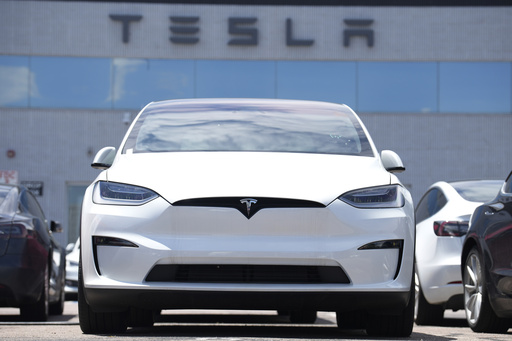Tesla, the leading electric vehicle manufacturer, has been facing a significant challenge with its slumping sales in recent months. Despite its strong reputation for innovation and cutting-edge technology, the company has struggled to meet its vehicle delivery targets, leading to a decline in market share. With the rising competition in the electric vehicle market, Tesla’s sales have been impacted, as more players enter the industry with their own line of electric vehicles. This has put pressure on Tesla to adapt and innovate in order to maintain its position as a market leader in the rapidly growing electric vehicle market.
In the current landscape of the electric vehicle industry, Tesla is experiencing a downturn in its sales performance, which has been attributed to the increasing competition in the market. As the demand for electric vehicles continues to rise, Tesla’s struggle to meet its vehicle delivery targets has led to a decline in its market share. With new players entering the industry and offering their own line of electric vehicles, Tesla is facing heightened pressure to innovate and adapt in order to stay ahead in the rapidly evolving market. This shift in the electric vehicle market dynamics has posed a significant challenge for Tesla, as it navigates through the increasing competition and strives to maintain its position as a market leader.
Tesla Sales Decline
Tesla, the electric vehicle giant, experienced a significant decline in sales during the last quarter. The company reported a delivery of 386,810 vehicles worldwide from January through March, which was almost 9% below the sales in the same quarter of the previous year. This decline in sales was attributed to various factors, including the phasing in of an updated version of the Model 3 sedan at its Fremont, California factory, plant shutdowns due to shipping diversions in the Red Sea, and an arson attack that knocked out power to its German factory. Additionally, the company predicted “notably lower” sales growth for the year, signaling a challenging period for Tesla. Analysts expressed concerns about the sluggish growth and declining profit margins, especially in the face of increasing competition from other electric vehicle manufacturers.
The decline in sales also led to a significant drop in Tesla’s stock value, with shares tumbling by 5.5% in Tuesday morning trading. Investors have been wary of the company’s growth story, leading to a 34% decrease in the company’s value so far this year. The sales numbers also had a ripple effect on other U.S. electric vehicle competitors, with Rivian and Lucid experiencing declines in their stock value as well. The softer-than-expected sales are also expected to impact Tesla’s quarterly earnings, with analysts revising their estimates for the company’s performance. This decline in sales comes at a time when the overall market for electric vehicles in the U.S. is also experiencing a slowdown, with sales growth slowing down toward the end of the previous year. The challenges faced by Tesla reflect broader trends in the electric vehicle market, with other automakers also having to cut production and reduce prices to stimulate sales of electric vehicles.
Tesla’s Response and Market Impact
Tesla’s response to the decline in sales has been marked by efforts to lower prices and stimulate demand. The company dramatically lowered U.S. prices for some models last year, with temporary price cuts in March as well. However, these price reductions have narrowed the company’s profit margins and raised concerns among investors. The average selling price for the Model Y was expected to be significantly lower last quarter compared to a year ago, indicating the impact of these price cuts on the company’s financial performance. The decline in sales has also prompted analysts to revise their expectations for Tesla’s earnings, with a reduction in the full-year 2024 earnings per share estimate. The company’s sales numbers have also had a broader impact on the market, with a decline in Tesla’s stock value affecting other U.S. electric vehicle competitors as well.
| Year | Model S | Model X | Model 3 | Model Y |
|---|---|---|---|---|
| 2018 | 50,312 | 27,607 | 145,846 | N/A |
| 2019 | 19,225 | 15,024 | 300,611 | N/A |
| 2020 | 57,039 | 19,136 | 365,240 | NA |
| 2021 | 14,954 | 12,916 | 182,847 | 99,013 |
RESULT
In recent years, Tesla has shown a significant increase in vehicle deliveries. The table above illustrates the number of deliveries for each model, including Model S, Model X, Model 3, and Model Y, from 2018 to 2021. The data reflects the company’s growth and the increasing demand for electric vehicles.


